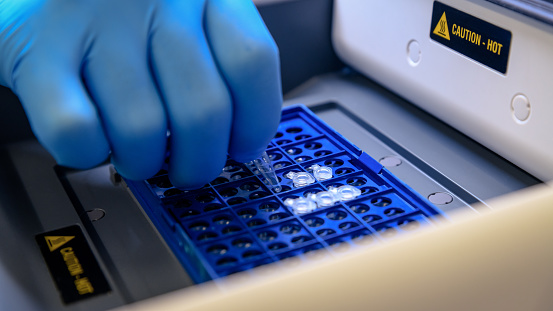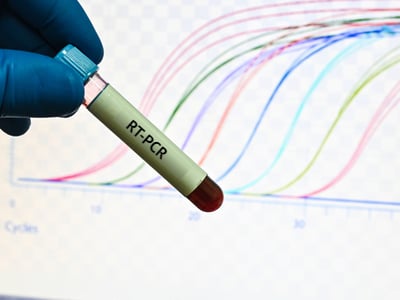As you may have surmised from the title of this article, Proteinase K (also known as protease K or endopeptidase K) shares many functional similarities to the protagonist of the iconic TV show, Breaking Bad. Much like Walter White, Proteinase K is incredibly versatile in its applications, while remaining relatively unassuming and overlooked at times. Unlike the chemistry teacher gone rogue, however, its properties can be channeled for good.
Proteinase K is a high-activity serine protease that is most often used in DNA and RNA extraction protocols as an efficient and dependable method for sample purification and the removal/digestion of RNases and DNases from preparations of nucleic acid—effectively “Breaking (the) Bad” in your samples. These purified samples can then be used in a variety of downstream applications such as PCR and mitochondria isolation. Its name is derived from its ability to digest hair, and specifically the keratin that composes the structure of hair.
Proteinase K is itself a protein; however, it is highly resistant to denaturation by heat, chaotropic salts, and detergents (ie. SDS, sarkosyl) and will continue to function in their presence provided the temperature/concentration do not cross a fairly high threshold (up to 65°C). Given its relative resistance to high temperatures, it is often used at higher temperatures (greater than 50°C), because many of the nucleases that would chew up your DNA would be inactivated at those temperatures. In addition to its stability, Proteinase K is also highly-touted for its broad specificity. It primarily cleaves the peptide bond adjacent to the carboxyl group of aliphatic and aromatic amino acids with blocked alpha amino groups.
 Figure 1. A representation of the molecular structure of Proteinase K
Figure 1. A representation of the molecular structure of Proteinase K
FAQs
With a brief background and introduction out of the way, let’s get into a few of the most Frequently Asked Questions (FAQs) about Proteinase K:
- How do you inactivate Proteinase K?
As previously discussed, Proteinase K is stable in a relatively wide range of temperatures. Thus, its inactivation is achieved at high temperatures by heating Proteinase K to 95°C for 10 minutes. It is important to note that Proteinase K cannot be completely heat-inactivated. However, subsequent washing steps in protocols for experiments such as nucleic acid isolation and PCR sample preparation will efficiently and effectively remove the leftover enzymes. Inactivation can also be achieved using protease inhibitors such as PMSF and AEBSF. - What is the optimal temperature for using and activating Proteinase K?
Proteinase K activity increases with temperature up to the 65°C upper threshold. Thus, at higher temperatures, between 50°C - 65°C, Proteinase K is most active. Higher temperatures aid the unfolding of contaminant proteins and nucleases, thus enhancing the ability of Proteinase K to break down these contaminant and unwanted proteins. Certain protocols and special techniques may call for lower temperatures than those listed above. Therefore, it is important to note that Proteinase K is still active at temperatures as low as 37°C. This flexibility can prove to be useful for the particular or specialized methods that you are performing when they call for different operational conditions. - What specific applications can Proteinase K be used for?
As a broad-spectrum protease, it is primarily used in the isolation of nucleic acids. A more comprehensive list can be found below:
- Digestion of unwanted proteins in molecular biology applications
- Removal of endotoxins bound to cationic proteins such as lysozyme and RNase A
- Removal of nucleases for in situ hybridization
- Prion research with respect to TSE (transmissible spongiform encephalopathies)
- Protease footprinting
- Mitochondrial isolation
- Isolation of genomic DNA
- Isolation of cytoplasmic RNA
- Isolation of highly native DNA or RNA
- What is the optimal pH for using Proteinase K?
Similarly to its relative stability in high temperatures, Proteinase K can be used and is active in a wide range of pH levels from 4 to 12. - How should I store Proteinase K?
We offer Proteinase K in two forms, as a lyophilized power and in solution. When prepared in a 20 mg/mL stock solution, long term storage is recommended at -20°C.
If you have any additional questions regarding Proteinase K or any of our other reagents, products, or services, do not hesitate to reach out to our support team using the contact information provided below, or by visiting us on our website. And if you're looking for other helpful reads regarding proteins, be sure to check out our other related blogs here.





